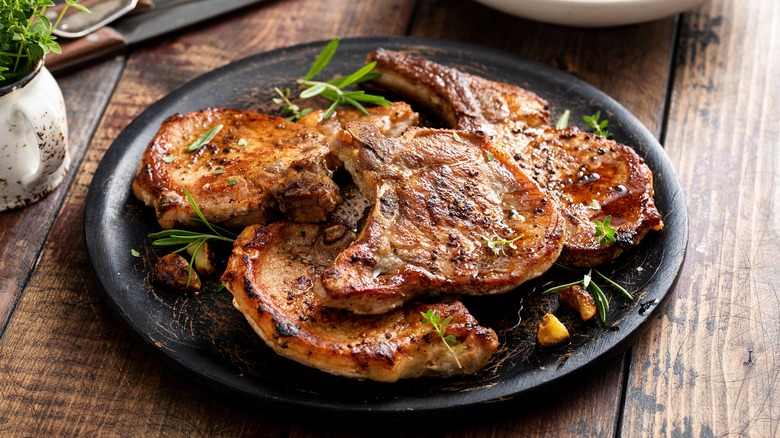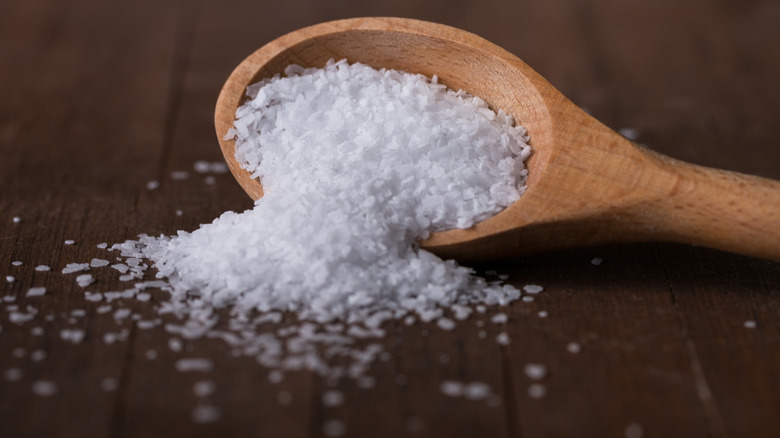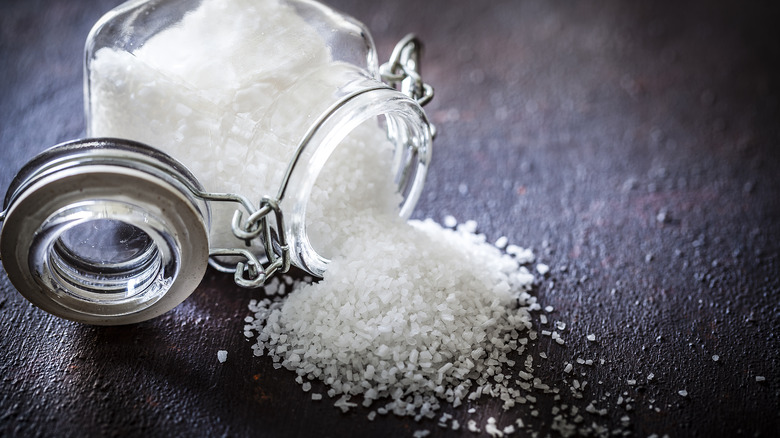The Big Mistake You're Making When Brining Small Cuts Of Meat
A good, salty brine can make otherwise dry meats as juicy and delicious as you'd ever want. While you're certainly aware of the annual brining of the holiday turkey (an indispensable part of cooking that particular bird), brining will bring out the best in smaller, everyday cuts of meat, such as chops and chicken breasts. The only trick is to remember that a brine is not a marinade. Longer brining time not only yields diminishing returns, but it can result in disaster by turning meat to mush. If you're talking about single-serving cuts of meat, all you really need is 15 minutes of brining time, a great reason to brine more often, starting with these nine meats other than turkey.
Unless you're brining a whole bird, more than two hours in a salt solution will reduce small cuts to meat porridge. The reason for this is any brine's active ingredient, salt — everything else, from the sugar to the aromatics, is simply an ornament on the sodium tree. If you want added flavor, marinate. If you want enhanced moisture (and breading that will stay on fried chicken), brine.
The magic of osmosis
Salt is so much more than a flavoring agent — in many ways, it's a cook's best friend. A simple saltwater solution (the ratio for a proper brine is ¼ cup coarse salt for every quart of water) will not only tenderize the meat on the outside but also the inside while causing it to retain moisture even after cooking. How? Two reasons: salt, like water, seeks to find its own level, and it also denatures strands of proteins.
When meat is immersed in brine, there's a huge difference in the relative concentration of salt. While meat can be as much as 70% water, it contains very little sodium. The first thing the sodium in the brine will do is enter the meat by osmosis and begin evening out the concentration of salt inside as well as outside. This pulls salt into the meat while pulling moisture out of the meat and back into the brine. In other words, your pork chop will begin to season itself.
Let's denature some proteins
After a little time, the salt in the brine will also strip away water molecules from the surface of the protein, unwinding their normally tight strands and ultimately denaturing them. The upshot of this process is that this new protein structure is great at absorbing and retaining moisture, which means one juicy pork chop for you.
The thing is, except for big projects like a whole turkey, this briny process of osmosis and protein denaturing is largely accomplished in two hours. After that, it slows dramatically: The salt travels further into your turkey in the first four hours of brining than the next 20. At the same time, sodium will continue its denaturation process, unraveling protein strands, breaking down weak bonds, and essentially destroying the structure of the meat. The bottom line is that, while everyone loves a firm and juicy forkful of meat, a soft and mushy one will cause dismay if not horror. Brine wisely, friends — and add maple syrup if you're cooking pork chops.


